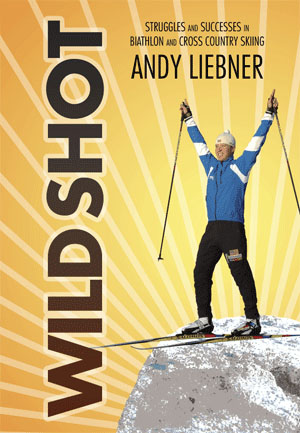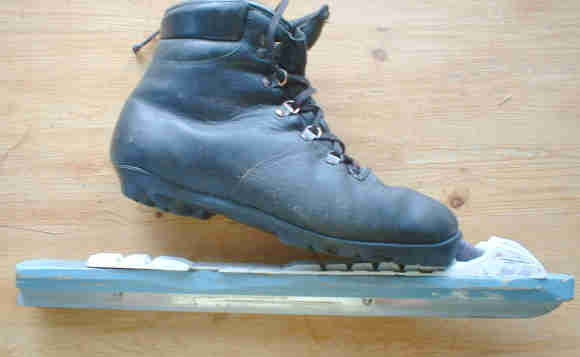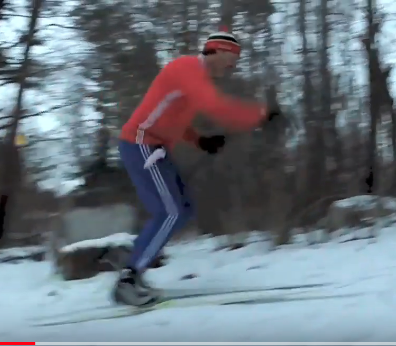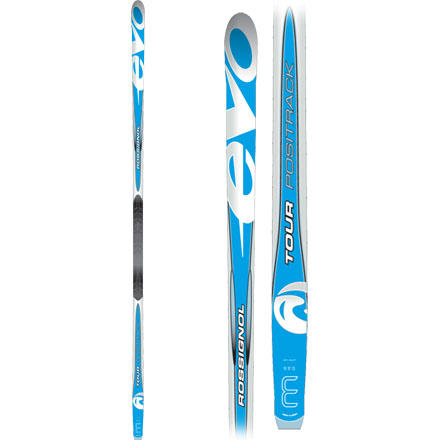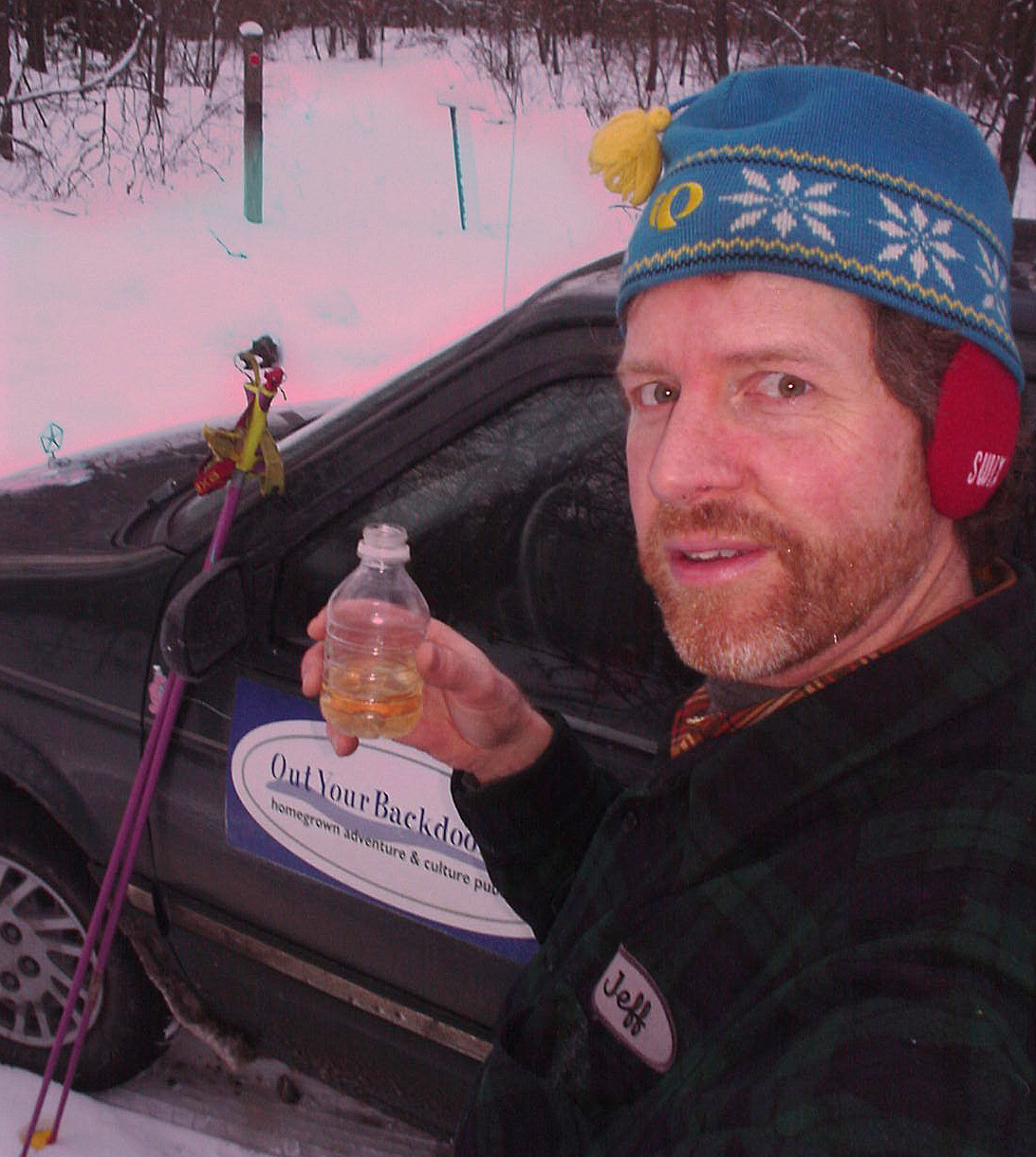[Here’s a revised version of my new ski theory…]
THE ROOTS OF SKI FUN
We like to ski because it lets us GLIDE.
And the pleasing way to get glide is by way of rhythm.
We also like to ski for sightseeing and to hang out with friends. And it’s usually done on casual, homestyle trails. And it’s easy to do if you have a set of all-round touring skis and if you’re comfy using them.
But there’s a problem because official instruction teaches racing technique to everyone. This doesn’t fit the needs of everyday-type skiers. Thankfully, skiing is easy, so most skiers evolve their own way to a touring type of technique. I’m here to say that they’re doing it right. But they can still have some trouble. And some who are thinking about giving skiing a try might be intimidated, especially if they’ve had a lesson or seen material better meant for racers. So I’m also here to give a few little-known tips that can really help everyday skiers. I’m doing this because I want to help give XC skiing some uplift. I figure the best way to do it is to encourage and help the most common kind of skiing: touring. (I use “tourist” and “dayskier” interchangeably. I mean casual outings, but my tips apply to long ones, too, on ungroomed or homestyle trails, multi-day and such.)
Now, skiing is easy, but there’s some skill there, too. I know it seems like I’m blabbing on about more than it warrants, but actually I think there’s enough going on to merit a bit more detail than usual. Especially since the usual detail is so WRONG for everyday skiers! I know there’s been reams written about race technique. Well, everyday people have a content-rich ski technique experience, too! So let’s press on then see what you think…
MORE GLIDE!
The best thrill of GLIDE is when it feels like you’re getting more out than you’re putting in. Skiing with a relaxing rhythm is how to get there.
Glide is why I like UPHILL skiing more than downhill. Downhill is obvious — whee! But when you’re gliding up a hill you know you’re getting something good.
Rhythm is the base. And the timings of our kicking plus our poling is how we get our rhythm.
GEARS!
The various timings can be thought of as different “gears” — low gears for torque, high gears for speed.
Everyday-type skiing has about 7 gears.
A big problem is that everyday-type skiers have only ever been taught 4 of them — and 3 of those are taught in somewhat inappropriate ways. It’s time to reorient how-to to the needs of the most common kind of skiing!
Dayskiers ski with an upright posture — for sightseeing, for chatting and because they might be carrying a daypack. And they need stability because they’re on fun, twisty, homestyle trails.
Of the 4 basic moves they are taught, tourists use diagonal stride (DS) on the flats and uphills; kick-doublepole (KDP) also on the flats; doublepole (DP) on slight downhills; and herringbone (HB) for the steeps.
DP means pushing on both poles at the same time and not using your legs. You fall onto the poles to get power then push them back behind you. It’s taught to everyone, but it takes more upper body strength than most tourists like to put out and its ergonomics aren’t so hot for sightseeing. It’s like teaching the butterfly to a casual swimmer. KDP means DP with a kick. Because it’s like scootering along on one leg at a time it requires a stable, even trail for best results — not common on casual trails. Tourists solve the technique puzzle in a different way. Here’s where their 3 extra gears come to the rescue!
TOURING’S ANCHOR MOVE
Touring’s biggest trick is the way most everyday skiers eventually learn to ski on their own, naturally. I call it the Delayed Diagonal stride (DD). It’s a variant step that tourists and dayskiers use in flat terrain and it goes with their upright posture. Here’s how it works: a skier stands up, nice and tall, reaches out, and poles. As the pole goes past their hip, they kick or step. The arm is shoved straight down and back, about 6-10 inches past the hip. And that’s it!
Here’s why it’s a good thing: the DD is a low-energy way to ski. It lets your skis do what they’re designed to do: you stand on a ski and it guides you down the trail. That’s why for your everyday skiing you want a wide, stable, mellow touring ski and not a squirrelly, narrow, stiff race ski.
The DD doesn’t use a complete weight transfer; if it does, it’s brief. And that’s fine. It gives enough grip/kick for flat terrain. This is also why a softer camber is nice for everyday skiing: you can’t kick real hard from an upright position. With the DD there is some weight on both feet more of the time. After the kick the weight falls back onto the kicking foot BEFORE it is pushed past the gliding foot. In effect, there’s a bit of a telemark position briefly. This is good. The telemark was designed for stability. The stable vertical pole-plant and the weight being on both feet give tourists the stability they need to have fun on homestyle trails.
So that’s just to let you know why what you might already be doing is a good idea for your touring-type situation. Sadly, it’s not a method that’s taught anywhere and it’s even labeled as incorrect. (Let’s see if I get any heat for pushing bad advice on unwitting noobs.)
To go faster or up a slight hill, you can advance the touring DD a half-beat. That is, don’t reach out with a long arm. Use a bent arm and a close pole-plant. This will bring your kick and pole timing TOGETHER. You can still use an upright posture. You still might not have total weight transfer or pole follow-thru, but you’re bringing the timing closer together. This lets you kick harder and grip more, it also results in more power because the poles ADD to the kick.
ENTER THE RACER…
As the trail tilts upward, the DD soon won’t give enough grip no matter how you play it. Then the time comes to use race technique for an easy source of traction. Finally, what the official instructors teach comes into play! Drop down into the ankles and flex them deeply. Plant the poles near the shoulders, don’t reach forward much. Bring the pole and kick timing completely TOGETHER to COMBINE these forces to let you easily jump or glide from foot to foot. And to let you transfer your weight entirely from foot to foot. This will give you both the grip and the glide you need to keep having ski fun up a hill!
As the hill gets even steeper and you have to herringbone, just do more of the same! Don’t reach forward with your arms outstretched — that’ll mess you up. Keep them in close. Tilt forward from your ankles. Then splay your tips, but only a bit. Keep the skis nested together (don’t waddle). Now, pole all the way down, back and through to the rear so that you can step entirely from foot to foot and get each ski past the other. You get your traction on the INSIDE edge of your tilted-in splayed-out ski. As it gets steeper yet, widen the vee. But if you’re skiing up a gullied-out hill, do a shuffling side-step up one side of the gully. Groomed trails don’t see such gullies, so this technique isn’t taught, but everyday skiers do it!
On fast, windy downhills, or when the trail gets really tricky, tourists need to use a dynamic athletic posture. They need to keep their hands low and in front. They need to flex their knees and ankles and keep their weight forward a bit so they can quickly move from foot to foot to get around corners or keep from falling. They need to be able to do complete weight transfers from foot to foot to keep their balance and footing as they step/shuffle around fast corners. This is the universal “get ready to do sports” position that wrestlers and anyone else uses who needs to be ready to move fast.
TWO MORE GEARS!
Tourists can also add the Two-Step DP (2SDP) and the Pendulum Step to their flat terrain repertoire. I’m hereby reviving these moves from the era of wood skis.
In the 2SDP you use an upright posture and you step once, step again, then double pole. Try it! You won’t throw yourself onto your poles and follow-through all the way with your torso crunching down. It’s a moderate move, for moderate skiing. It’s great for sightseeing and it’s stable on an uneven trail. …And many of you are already doing it. (So I’m not really reviving it, just putting it into print and giving it respect.) I’ve heard tourers laugh at themselves for doing it, thinking it’s a mistake, since it’s not in any how-to info — well, it’s the real deal. Keep it up!
Then there’s the Pendulum Step. This is 2SDP or DS with a missed pole-plant. You use an upright posture, taking two steps while pumping your poles in front of you without planting them. In the DS you scissor them, then plant the same pole again as what you last poled with. On a winding, uneven trail, it can come in handy. I was doing it a lot the other while skiing in with a group — I could stand upright and see the trail amidst everyone yet not run up on anyone because it’s a lower-geared move.
So don’t limit yourself. Let your rhythm roll. Some folks might just stop their arms from moving, might check themselves, in a twisty section, if they didn’t know it was fine to keep swinging your arms and just skip planting a pole if that feels better.
Transitions and change-ups used to be an emphasized part of skiing. With today’s lightweight gear and racer technique only elite athletes work much on getting every transitional pole plant timed exactly when it should be. Citizen racers just doublepole up to a hill then change into striding as best they can, meaning they sometimes flounder a bit. Transitions happen so fast that skiers probably couldn’t tell you how they manage to do it smoothly, if they do. It’s possible to change from a DP to a KDP then to a DS without missing a beat. But when the trail turns in an awkward direction and/or makes a surprise uphill change a skier can find themselves needing to pole twice on the same side or needing to do an unusual move. Transitions mean doing whatever it takes to keep the beat. Or at least not to lose (much) momentum.
Change-up beats can be stretched out into easier parts of the trail and used just to provide a fun break or variety. Playing around with beats lets you see what’s really going on when you ski.
For tourists, “awkward” timing situations make up a large part of an outing. That’s because they’re on fun trails! Wide, highway-like groomed trails aren’t for everyone, or aren’t best all the time, anyway. Mt-bikers prize twisty, narrow trails as rare singletrack where handling skills are rewarded. It’s just the same in skiing! Except in mtbiking, good singletrack is rare. In skiing, great trails are EVERYWHERE! In the old days all skiers were in this kind of situation and so even racers learned to do a wide variety of different beats and transitions.
TOILETSEATS ARE NEVER GOOD FOR SKIING, BUT THESE 3 DRILLS ARE
Here are three classic drills (taught everywhere) that you can practice to help you see what’s going on in skiing. Skiing is tricky enough that simple drills are VERY helpful for putting all the pieces together and getting your body to do the ski-thing.
Tourists and day-skiers shouldn’t ever ski in “the toilet seat.” That’s what happens when you let your hips droop and your knees bend while NOT flexing your ankles. You can use your new extra gears and an upright posture — but don’t squat!
To get a feel for the race technique that you’ll use on steep uphills, ski without poles. That will teach you to change your weight completely from ski to ski. Fling your arms forward and back in time with your kicks and you’ll get plenty of grip—but ONLY when you time them together. Let your body rise and fall as you flex your knees and ankles and “bounce” to get grip. You can even ski up modest uphills without poles.
To get an even better feel for uphill grip and timing, jog up a hill on your skis without trying to get any glide. Act like you’re running in shoes. Swing your arms naturally as when running. Your arm will naturally swing WITH your foot action and you’ll get a great sense for the exact kind of weight transfer you need to get grip. When you ski with glide work on getting that same kind of “foot planting” but without impairing your glide — don’t get in the way of your ski (my imagery). It’s more like a lion’s pounce, a soft landing, which glides when you land but grips when you coil up over it.
To get a feel for the optimized race-style poling you’ll do on uphills or when you want to go fast, do some DP on the flats or a slight downhill but without using any arm action. Hold your poles close in then let your body fall forward and catch yourself on the poles, do a “crunch” on them and curl your torso down. You’ll glide forward without needing arm work. This shows you how falling body weight is the main driver of race technique. You’ll use a similar forward position in a race-type diagonal stride, but you don’t rise and fall when doing race diagonal like you do with race DP. However, torso-drop action means you can’t look at scenery or chat with your friends.
SKATING LENDS A HAND
The gearing for skating is also illustrative of what’s going on in ski timing.
If you’re not familiar with skating, this part might be harder to follow, but a skater uses the following “gears”: no-pole skating for downhills; V2A for the flats (where you DP once for every two skates); V2 for moderate uphills (you DP once for every skate); V1 for uphills (you skate and DP at the same time off of one side); and diagonal skate for the steepest ups (you single pole for each skate).
…But there’s a little-taught yet hugely common twist in skating, too. There’s a move used by citizen racers on the flats called the Delay V1. You step down and DP on one side. Then you hang a moment. Then you skate to the other foot. You delay the skate action by a half-beat. It’s for conditions that are too fast for regular V1 but where you don’t feel stable enough to commit to V2 nor are you strong enough for V2A. You want an easier way to be stable. The Delay or Hang V1 gives it to you. It’s also a somewhat upright-posture move. And it’s used by many everyday-type racers. It’s great on the everyday trails that many skaters use for training. It’s great for everyday level race courses that aren’t always groomed so perfectly. It’s also called “Ride’n’Glide.” But it’s rarely mentioned or taught and it’s not in any books. Interesting, I think. It kind of parallels the everyday tourist steps that are likewise missing from our ski culture. …But not anymore! : )
***
Anyway, give this stuff a try. See what ya think. Report back.
The main parts of this approach aren’t presented anywhere else.


